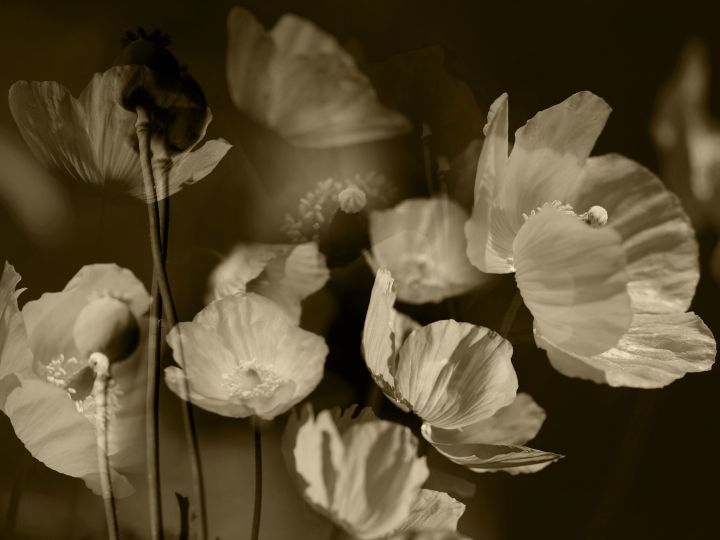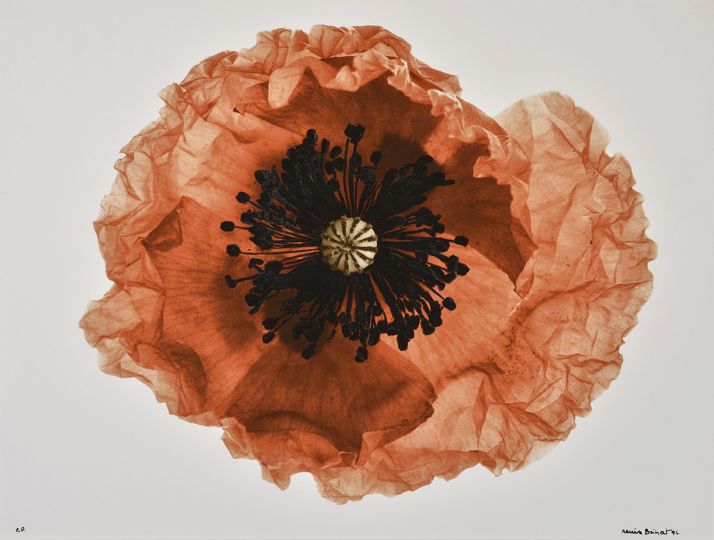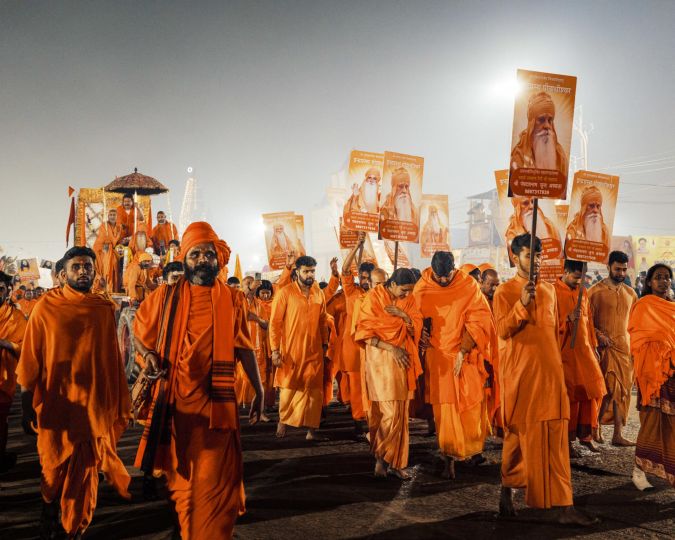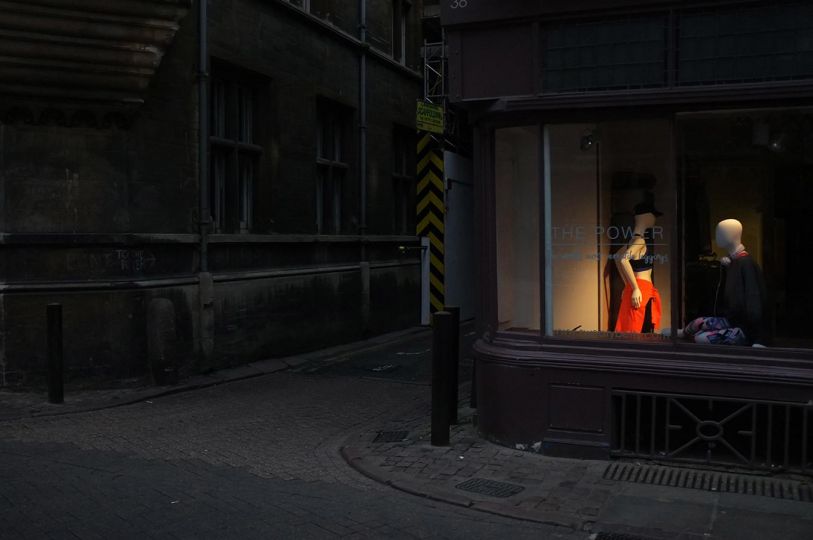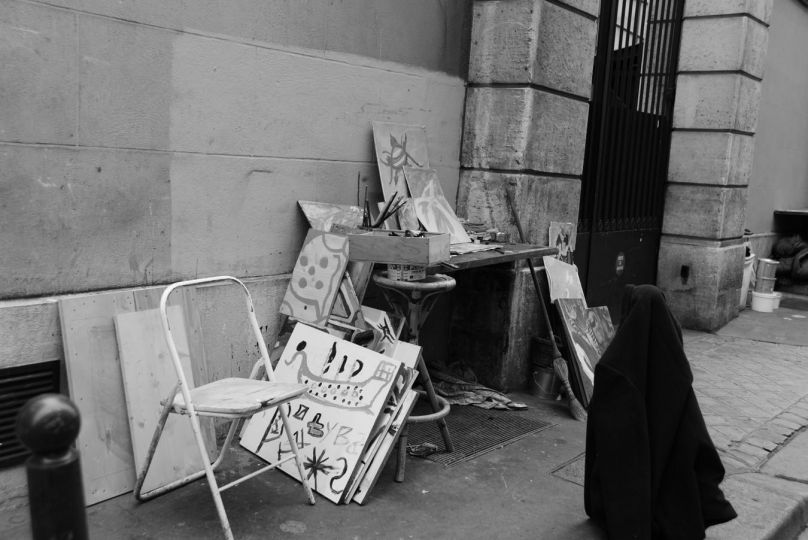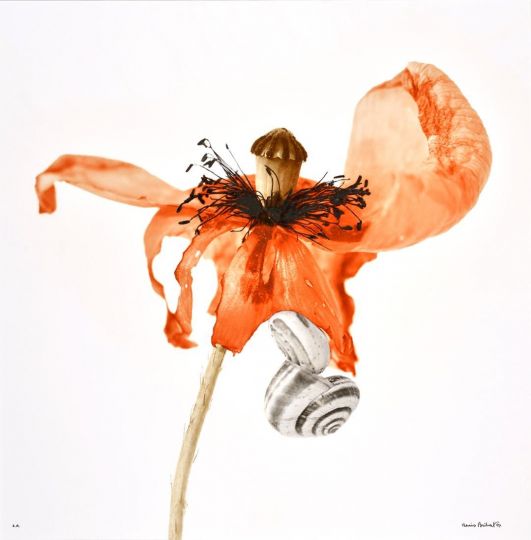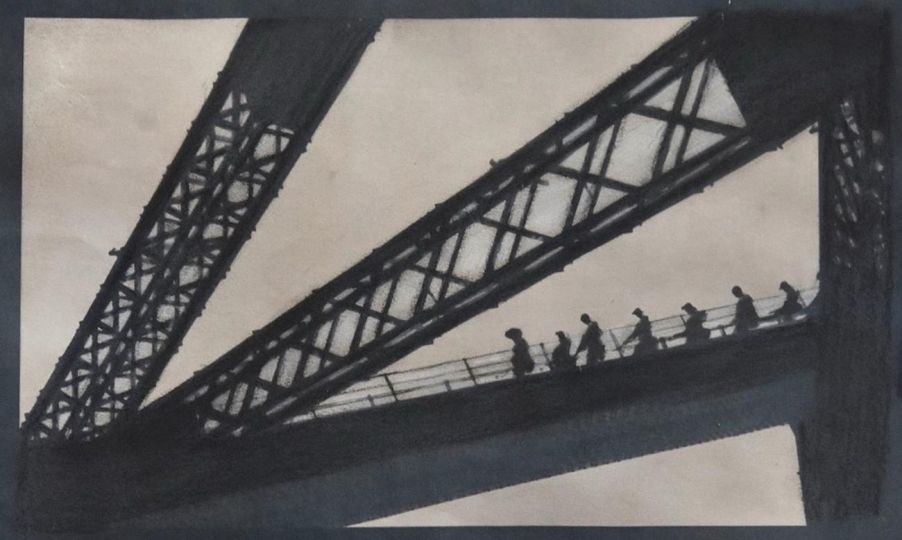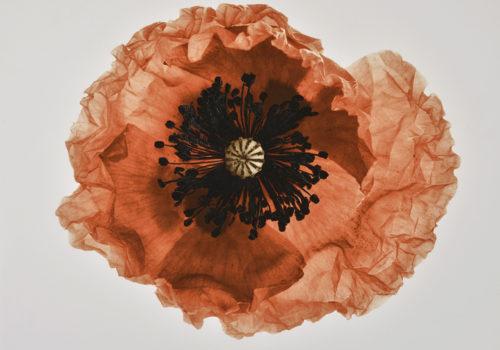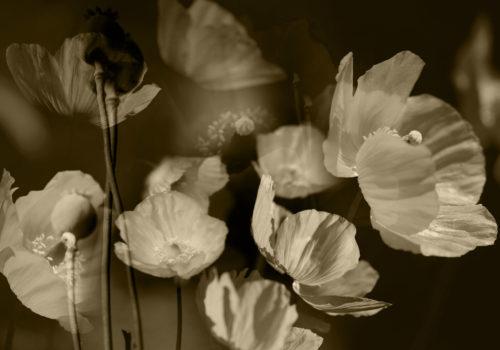The Illusion of Poppies
This series began with a simple observation—a poppy flower, a poppy seed. Yet, each time I encountered them, images would surface in my mind, unbidden and instantaneous. It was as if every new sight folded into past impressions, merging with fragments of memory. This reflection was not deliberate but instinctive, a process beyond my control. I gradually realized that my act of seeing was not merely about the present moment; it was an entanglement of past, present, and imagined realities.
As I sifted through the photographs I had taken, this experience continued to shape my perception. The way I edited the images was deeply affected by these unconscious layers of memory and emotion. It was during this process that I began to understand Dukkha—the Buddhist concept that all things are transient, unsatisfactory, and ultimately illusory. Dukkha speaks to the impermanence of everything we perceive, the way things appear to be solid but are constantly shifting, dissolving, and reforming in ways we cannot grasp entirely.
In The Illusion of Poppies, forms emerge and fade, edges soften into shadows, and details blur into impressions of what they once were—or what they seemed to be. The sepia tones lend a sense of nostalgia, reinforcing the idea that even as we attempt to preserve an image, it is already slipping away, transforming in the mind’s eye. Through this interplay of perception, memory, and illusion, I invite viewers to consider the fragile nature of seeing: how each moment is a fleeting reconstruction, where reality is not fixed but fluid, shaped as much by what is before us as by what lingers within us.

